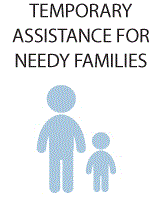A large and growing body of research finds that poverty has lasting impacts on a child’s ability to succeed in school and in later life. But research also shows that increasing a family’s income, even by a small amount, improves outcomes for children. A new report by DCFPI outlines this research and recommends that DC reform its Temporary Assistance for Needy Families (TANF) program to better support children. In particular, the District should modify its rigid TANF time limit to ensure that it does not push more children into deep poverty.
Poor parents often struggle to create a positive environment for their children because of poor food access, unstable and unhealthy housing, and exposure to violence. These conditions can leave children in highly stressful environments — called “toxic stress” — with long-term effects on their development.
The result is that low-income children enter school well behind other children and perform more poorly. They complete fewer years of education, and work less and earn less as adults than others.[i] Poor children are more likely to have emotional behavioral disorders[ii] and difficulty managing stress. Exposure to toxic stress can also change the immune system and lead to increased inflammation, which is associated with poor health outcomes like asthma, cardiovascular disease, and autoimmune disorders.[iii] And toxic stress in early childhood is also a risk factor for later risky behavior, like illicit drug use, that can negatively affect adult health.[iv]
The stresses of poverty are so great that they can physically alter a child’s brain development. One study found that poor children had less grey matter in areas of the brain associated with academic test performance, and that this alone could account for up to 20 percent of the gap in achievement scores between low- and higher-income children.[v]
On the other hand, research also shows that increasing a family’s income, even by a small amount, help their children succeed in the future. The long-term benefits of anti-poverty programs include better health, more education, improved earnings and economic self-sufficiency, and higher marriage rates. One study found that an annual income increase of $3,000 during early childhood (prenatal year through fifth birthday) was associated with 19 percent higher earnings during adulthood.[vi]
The scientific confirmation of the importance of stable family incomes has numerous implications for the TANF welfare-to-work program. On one hand, the plan to raise DC’s very low TANF benefits over the next three years — from $441 a month for a family of three to $644 — will help parents find more secure housing and meet their children’s other needs.
On the other hand, a TANF time limit that is set to go into effect in October 2016 could leave thousands of families with no income, and in deeper stress, unless it is modified. Some 6,000 families — with 13,000 children — will reach the time limit next year, and it is likely that many will not be able to replace the lost income. Changes to DC’s TANF time limit are needed to ensure that families receive adequate support while they are engaged in work preparation activities and when work is not available. A rigid time limit ignores the fact that TANF serves an extremely diverse group of families — and that the path to self-support will take longer for some than for others.
As the District moves forward to review and adjust its TANF time limit, we as a city should adopt the goal that the new time limit should help families succeed without pushing any more children into deep poverty. That will create a brighter future for our children and for the District as a whole.
You can find DCFPI’s full report here.
To print a copy of today’s blog, click here.
[i] Greg Duncan and Katherine Magnuson “The Long Reach of Early Childhood Poverty”, Pathways, (Winter 2011).
[ii] Firth (2014).
[iii] Jack P. Shonkoff, MD, and Andrew S. Garner, MD, PhD. And the Committee on Psychosocial Aspects of Child and Family Health, Committee on Early Childhood, Adoption, and Dependent Care, and Section on Developmental and Behavioral Pediatrics, “The Lifelong Effects of Early Childhood Adversity and Toxic Stress. American Academy of Pediatrics. Pediatrics, (2012), 129(1), e232-e246. http://pediatrics.aappublications.org/content/pediatrics/early/2011/12/21/peds.2011-2663.full.pdf
[iv] Shonkoff and Garner, (2012).
[v] Arloc Sherman, “Brain Studies Highlight Importance of Anti-Poverty Policies for Children,” Center on Budget and Policy Priorities, (August 6, 2015),
http://www.cbpp.org/blog/brain-studies-highlight-importance-of-anti-poverty-policies-for-children
[vi] Greg Duncan, Kathleen M. Ziol-Guest, and Ariel Kalil, “A. Early-Childhood Poverty and Adult Attainment, Behavior, and Health,” Child Development. (January/February 2010), 81:1, 306-325. These studies could not isolate how much of the effect was from the income boost and how much was from a change in the parental employment. In many studies, hours worked increased, meaning positive outcomes could be related to increased parental employment. In others, hours worked decreased, meaning that positive outcomes could be related to parents having more time to spend with their children.
